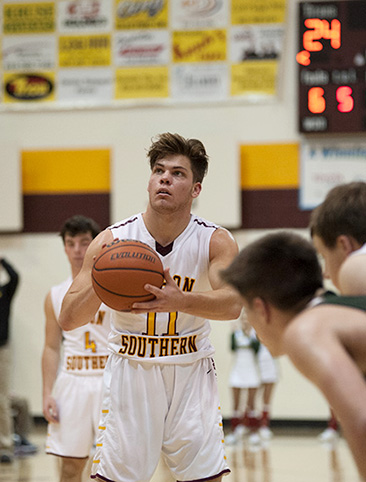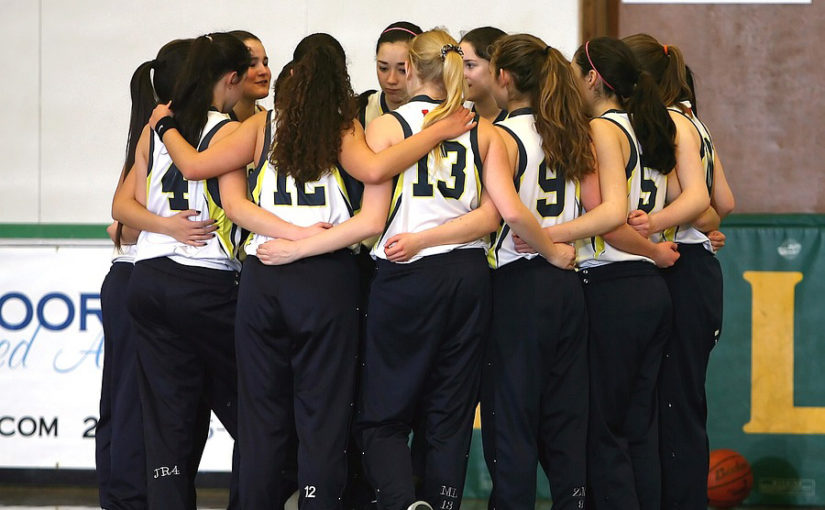The power of mental training
Goal setting, imagery gets athletes in the right state of mind before practices and competition

When the pressure is on, many thoughts go through an athlete’s mind. If I miss this shot, will we lose? What if I can’t defend my opponent?
If there is doubt in an athlete’s mind, it could be game over. If the old saying is true that athletics are 90 percent mental and 10 percent physical, an athlete must do what they can to increase attention and focus.There are multiple factors to consider when it comes to an athlete’s attention, such as how to shift attention as needed and how to intensify one’s focus. An athlete’s focus during the game can be equally as important as where the focus was before the game. Think about what you allow athletes to do prior to the start of practice and competition. Is it an open door to chaos leading up to game time? If that’s the case, the athlete is missing a prime opportunity to gain the focus they need to stay cognitively fresh.
The objective (with imagery) is to visualize each goal set in order to create a roadmap to success.
So, how can athletes obtain greater focus? They must first understand what detracts from their mental state. It could be a certain play, an opponent’s skill level, the referees or the fans. This is the wrong mindset. These are intangibles in the sense that they are external forces that the athlete has no control over. Too often, athletes allow what’s outside to disrupt what’s inside. When a mental correction is needed, the focal point must be on what’s causing the athlete to lose focus. At some point during practice or competition, there will be a “trigger” or cue that shifts the athlete’s focus to a negative state.
Some points to address when an athlete struggles with a loss of focus are:
- Does the athlete lose concentration when winning or losing? Does it happen at the same time during a game?
- Is the athlete’s concentration affected by a certain play or opponent?
- Do on-looking parents or fans affect the athlete?
- What is the overall chemistry within the team?
- Are there external or internal forces that are distracting the athlete?
By examining these different situations where athletes tend to lose focus, the coach can develop mental activities to strengthen the level of attention given to the performance. When sports psychology practitioners work with an athlete, there are two practices they use to address mental training issues: Goal setting and imagery. Both are simple mental training practices that, if practiced regularly, can aid your athlete in increasing their focus. Though there may be limited time for your team to improve its mental approach, both training sessions described in this segment are designed to be a 1-on-1 approach, lasting 10 to 15 minutes with an additional five minutes for discussion.
Throughout the mental training, it’s critical that the athlete masters the first step before progressing to the next. The results can be astounding if the athlete commits to adding these steps to every practice and competition. I encourage coaches to walk through each mental training session with all athletes to gauge the level of attention each athlete brings to the team. Though there is no replacement for utilizing a sport psychology practitioner for your program, these mental training sessions are a good starting point in your team’s development.
Goal setting
Chances are if you have used goal setting, it’s normally at the start of the session. You discuss what we want to accomplish, then it’s put away. That’s where programs fall short in keeping athletes focused. Goal setting should be a weekly practice.
 The goal setting process starts by discussing with the athletes what areas they wants to improve. Once decided, the athlete should set two to three session-end goals focused on how they want to finish in the selected skill.
The goal setting process starts by discussing with the athletes what areas they wants to improve. Once decided, the athlete should set two to three session-end goals focused on how they want to finish in the selected skill.
The key is that the athlete must formulate the goals that are both measurable and positive in nature. An example of a misguided goal is, “I don’t want to miss a single play.” The intentions may be good, but this goal lacks focus. To frame this as a positive, the athlete should restate it as, “I will make each play with 85 percent accuracy.” The I will portion is positive and commands ownership. The “85 percent” adds a quantitative factor to the goal. It gives athlete something to measure related to their success of obtaining the objective.
Once season-ending goals are set, the athlete must set weekly practice goals. These weekly goals must be directly tied to the season-end goals.
» RELATED: Mental keys to athletic improvement and achievement
I always encourage athletes to accomplish this on Monday so they can spend a week reflecting and focusing on their goals. An index card works perfect for this. I also have the athlete write their name and uniform number on the card to add ownership. The same process toward positive measurable goals should be taken.
Once this mental training practice is complete, ask the athlete to place the index card on their bathroom mirror. This ensures that they see their goals every morning and night. Daily visualization of the goal helps improve the focus needed to succeed.
Once established, each focal point of improvement is molded into a goal that meets two criteria: The goal is measurable, and it’s at the control of the athlete. The goal is that after three weeks of the coach dedicating a small amount time to this, the athlete owns it and makes it a weekly part of their game.
Imagery
Imagery is a mental training practice that takes time to develop. Not every athlete is going to jump right in and have great success with imagery. It takes time and dedication, but the rewards can be a greater level of confidence in their performance. The objective for athletes is to visualize each goal set in order to create a roadmap to success.
To do this, have athletes watch video of moments when they successfully made a play. In preparation of facing the same defense, ask them to close their eyes and visualize a moment where they are successful.
For the athlete to successfully use imagery, they must visualize specific details about the event and see a positive outcome. The greater the detail, the greater the confidence. Ask the athlete to describe the opponent’s uniform colors, the look of the facility and then the play that leads to a successful outcome.
Once the athlete is successful in using imagery from a positive experience, challenge the athlete to use imagery to overcome any negative experiences. Discuss with the athlete how they could have changed the moment to make it positive. Then, ask the athlete to replay the negative event, only this time have the athlete visualize a positive outcome. This can be done by the athlete when they are on deck, on the bench or prior to the next play.
Every athlete struggles at one point or another and as coaches we continuously want to find ways to help our athletes become successful. Overcoming the mental blocks that occur throughout the season is the key to making that success a reality.
An athlete must bring attention and focus to every time they step on the playing surface. As the demand for stronger, better and faster competitors grows, coaching staffs must administer mental training as a regular part of practice. By adopting these mental training practices into your game plan, both the athlete and coach can overcome the obstacles that may be ahead.
Dr. Ed Garrett is the assistant professor for the Department of Sports Administration at Belhaven University (Jackson, Miss.) with a degree in Sports and Performance Psychology.





